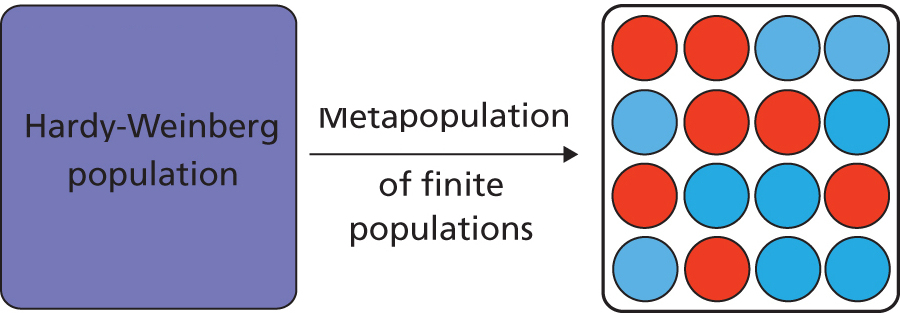
Prelude
to population structure: a thought experiment
In a single infinitely large population
not subject to selection, the expectation from the Hardy-Weinberg
theorem is that allele and genotype frequencies will
remain constant. When an infinite population is divided into
a structured meta-population
of smaller finite isolated
populations, genetic drift ensures that each
sub-population will eventually become fixed for one of the
alleles originally present. In a two-allele system with p
= (1 - q) = f(A1) and (1
- p) = q = f(A2), a fraction
(1 - q) of the sub-populations will become fixed for
A1, and
a fraction q fixed for A2.
The overall allele frequencies are the same in the ideal
population and the meta-population, but the fraction of heterozygotes
in the meta-population goes to 2pq = 0 over
time. The deficiency of heterozygotes is thus a
measure of population structure.